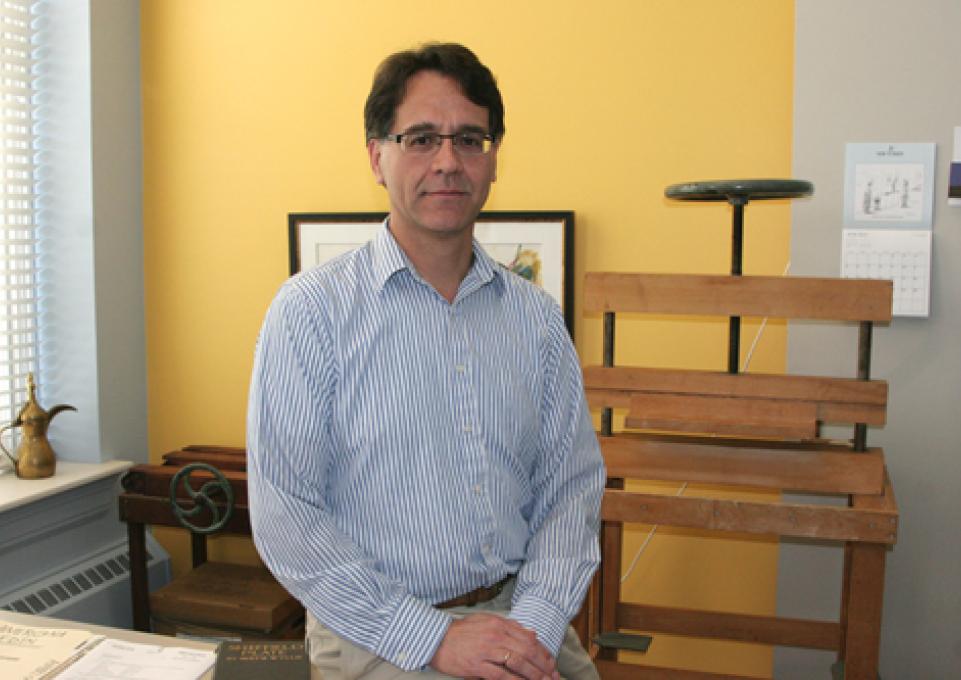
A December 2012 Scientific American article, “The Case of the Disappearing Daguerreotypes,” features the groundbreaking research Patrick Ravines, director of the Art Conservation Department, pursued with colleagues from Kodak Research Labs and the George Eastman House International Museum of Photography and Film in Rochester.
From 2005 to 2010, the team investigated daguerreotypes, the first practical form of photography used in the mid-nineteenth century, by using advanced electron and optical imaging techniques. Daguerreotypes are unique metallic photographs in which the image is composed of silver, mercury, and gold. The image surface is sensitive, reactive, and can readily change, explained Ravines, who served as senior project conservator and research fellow at Eastman House before coming to Buffalo State.
The research began when an exhibit by famed daguerreotype creators Albert Sands Southworth and Josiah Johnson Hawes went on display at the International Center of Photography in New York City in 2005. Conservators noted that the very act of displaying the images damaged them.
“By partnering with material scientists and chemists at Kodak Research Labs and by using high-resolution scanning electron microscopes, our studies began to reveal the nanotextured nature of the daguerreotype image surface,” Ravines said. This team, along with colleagues at the Metropolitan Museum of Art, recognized that light was damaging the images because the plates had been exposed to salty air and chlorides. The light reacted to the silver inside the plates and formed silver chloride, which produced a hazy, white appearance. Prior to this exhibit, portrait-makers would seal the plates immediately in glass cases to protect them.
Interestingly, according to the Scientific American article, the team’s discovery could help other industries, such as engineering nanocapsules for medicine. The discovery also can help protect daguerreotypes in the future.
“More groups are focusing on the material and chemical nature of the daguerreotype and all these efforts will help preserve and conserve the unique first images of places, people, and events from the mid-nineteenth century, which gave rise to photography and the imaging revolution,” Ravines said.
Ravines continues his daguerreotype research with colleagues in Buffalo, throughout the United States, and abroad.
